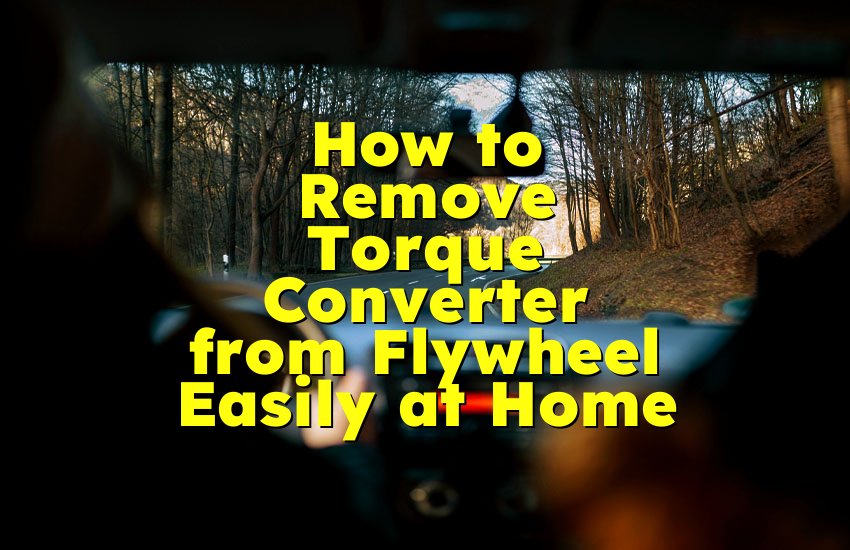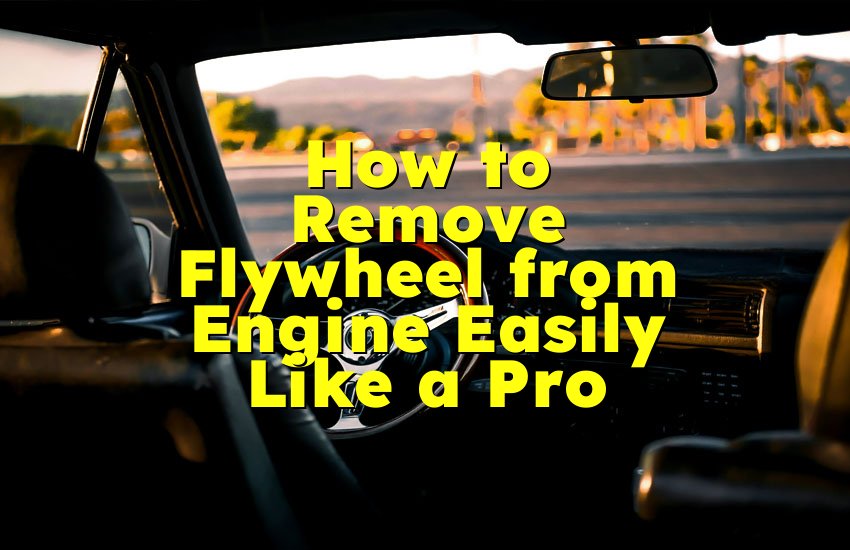As an Amazon Associate, I earn from qualifying purchases at no extra cost to you.
How to Flush a Radiator with a Garden Hose: Easy Guide for a Cleaner, Warmer Home
You want your radiator to work well and keep your home warm during cold days, right? Flushing your radiator with a garden hose is a simple way to clean out dirt, rust, and old water that can stop it from heating properly. You don't need special tools or a plumber. With just a garden hose and some patience, you can make your radiator work better, last longer, and save money on heating bills. This article will show you exactly how to do it step by step, even if you've never done it before.
Find and Prepare Your Radiator for Flushing
Before you start flushing your radiator, you need to find it and get it ready. Usually, radiators are along the walls in rooms and connected to pipes that carry hot water or steam. First, turn off your heating system and let the radiator cool completely so you don't get burned.
Next, close the valves on both ends of the radiator to stop water from flowing in or out. You may need a wrench to turn the valves. Then, find the drain valve, which is usually at the bottom of the radiator. If your radiator doesn't have a drain valve, you can use the bleed valve to release air and water.
Make sure you have your garden hose ready. Connect one end to the drain valve or the radiator's outlet pipe, and put the other end outside or into a bucket to catch the water. It's important to have a bucket or a place to drain the dirty water safely without making a mess in your home. Finally, open the drain valve slowly to let the old water come out. This preparation step makes sure you can flush the radiator safely and easily.
- Locate the radiator in your room.
- Turn off heating and let the radiator cool.
- Close valves on both ends of the radiator.
- Find and connect the drain valve to a garden hose.
- Position hose outlet outside or into a bucket.
- Open the drain valve slowly to release old water.
Connect the Garden Hose and Prepare for Water Flow
Now that your radiator is ready, it's time to connect the garden hose properly. Use a hose that fits tightly on the radiator's drain valve or outlet to avoid leaks. If needed, use tape or a clamp to keep the hose fixed in place.
A loose hose can cause water to spill and create a mess. Make sure the other end of the hose is directed outside or to a large container because you will be flushing out rusty and dirty water.
Once the hose is connected, check if the drain valve is fully open to allow water to flow freely. You want to flush all the dirty water from the radiator. Before turning on the garden hose, double-check that the hose is straight and there are no kinks or bends that could block the water.
When everything is set, slowly turn on the water from your garden hose. Start with low pressure so the radiator can handle the water flow without damage. If you hear strange sounds or see water leaking anywhere, turn off the hose and fix the problem before continuing.
- Use a hose that fits tightly on the drain valve.
- Secure hose with tape or clamp if needed.
- Direct hose outlet outside or into a container.
- Open drain valve fully for good water flow.
- Check hose for kinks or bends.
- Turn on water slowly at low pressure.
Flush the Radiator with Clean Water
With water flowing through the garden hose, your radiator starts to get cleaned. The clean water pushes out all the rust, dirt, and old water trapped inside. It's important to keep the water running until the water coming out of the hose looks clear. This can take several minutes. Keep an eye on the water color and flow. If the water is still brown or rusty, keep flushing.
Sometimes, you may want to help the process by gently shaking or tapping the radiator to loosen stubborn dirt inside. Be careful not to damage the radiator while doing this. If your radiator has several sections, you might need to flush each one separately by opening and closing valves or bleed points. Make sure the water pressure is not too strong to avoid damaging the radiator's inside parts.
Flushing with clean water is the most important part because it clears out all the old gunk that stops your radiator from heating properly. If the water stays clear after several minutes, your radiator is clean and ready for the next step.
- Water pushes out rust and dirt.
- Keep flushing until water runs clear.
- Gently tap radiator to loosen dirt.
- Flush each section if possible.
- Avoid too much water pressure.
- Ensure clear water before stopping.
Drain Out All the Water Completely
After flushing, you must drain all the water out of the radiator to prevent any leftover dirty water or air pockets inside. Leaving water in the radiator can cause rust and reduce heating efficiency. To do this, keep the drain valve open and let all the water flow out through the garden hose.
If you have a bucket catching the water, be ready to empty it as needed. Sometimes water drains slowly, so be patient. You can tilt the radiator slightly if possible to help all the water come out. When you don't see any water dripping anymore, close the drain valve tightly. It's important to make sure the valve is fully closed to avoid leaks when you refill the radiator later.
At this stage, your radiator is empty and clean inside. Draining completely is the last step before you refill it with fresh water.
- Keep drain valve open to drain all water.
- Use bucket to catch draining water.
- Tilt radiator gently to help water flow.
- Wait until water stops dripping.
- Close drain valve tightly.
- Radiator is now empty and clean.
Refill the Radiator with Fresh Water
Now your radiator is clean and empty, it's time to refill it with fresh water. First, make sure all valves are closed except the inlet valve where the fresh water will come in. Slowly open the water supply to the radiator and let the water fill up inside. You may hear air escaping; this is normal. Use the bleed valve to let trapped air out. Open it carefully with a radiator key or screwdriver until water starts to come out, then close it.
Filling the radiator properly is very important because trapped air can cause cold spots and reduce heating. Check all valves to make sure there are no leaks. If you notice water leaking, tighten the valves or call a professional if it continues. Keep an eye on the pressure gauge if your system has one to make sure the pressure stays normal.
Once the radiator is full and no air comes out, your flushing process is complete, and your radiator will work better and heat your home more efficiently.
- Close all valves except water inlet.
- Open water supply slowly.
- Use bleed valve to release trapped air.
- Check valves for leaks.
- Watch pressure gauge if available.
- Radiator is refilled and ready.
Test the Radiator and Clean Up After Flushing
After refilling your radiator, turn your heating system back on and check how it works. Feel the radiator's surface; it should get warm evenly from top to bottom. If some parts stay cold, it might mean there's still air trapped or dirt inside.
Bleed the radiator again to remove any air pockets. Also, listen for strange noises like banging or gurgling; these signs mean the system needs more air released or a professional check.
Clean up your workspace carefully. Remove the garden hose and wipe any water spills. Dispose of the dirty water safely, especially if it contains rust or debris. Check your tools and put them away. Taking care of your tools and cleaning up helps keep your home safe and ready for the next time you flush the radiator.
Testing and cleaning up completes your radiator flushing and helps you enjoy a warm, cozy home with a radiator that works like new.
- Turn heating system on and feel radiator warmth.
- Bleed radiator again if cold spots remain.
- Listen for unusual noises.
- Remove garden hose and clean spills.
- Dispose of dirty water safely.
- Store tools and clean work area.
Final Thoughts
Flushing a radiator with a garden hose is an easy, cheap way to keep your heating system working well. It removes dirt, rust, and old water that can stop your radiator from heating properly. By following the steps carefully, you can do it yourself without needing a plumber. Your radiator will heat better, last longer, and help keep your home warm all winter. Remember, safety is key — always turn off your heating system and be patient. A little care goes a long way for a cozy, warm home.
Frequently Asked Questions (FAQs)
Is it safe to flush a radiator with a garden hose?
Yes, it is safe to flush a radiator with a garden hose if you take the right steps. Make sure your heating system is off and the radiator is cool before you start. Use low water pressure to avoid damaging the radiator. Secure the hose connection so water doesn't leak and cause damage. Be careful with the valves and open them slowly. If you're unsure or your radiator looks old or fragile, you might want to ask a professional for help. Doing it carefully keeps you safe and protects your radiator.
Can I flush any type of radiator with a garden hose?
Most radiators that use water heating can be flushed with a garden hose, but it depends on the type. Older or very delicate radiators might need special care or a professional. Radiators without a drain valve might be harder to flush fully. Also, electric radiators or steam-only systems usually don't need flushing with water. Always check your radiator type and manufacturer instructions before flushing. If you're not sure, ask an expert to avoid damage.
Do I need special tools to flush my radiator?
No, you don't need many special tools. A garden hose, a bucket to catch water, and a wrench or radiator key to open valves are usually enough. Sometimes tape or a clamp helps to secure the hose to the drain valve. Most homes already have these items. The important part is following the steps carefully to avoid leaks and damage. If your radiator has special valves or parts, check their instructions first.
Is it necessary to bleed the radiator after flushing?
Yes, bleeding the radiator is very important after flushing. When you flush water through the radiator, air can get trapped inside. This trapped air stops the radiator from heating evenly and can cause cold spots or noises. Using the bleed valve to release the air makes sure the radiator heats well and works quietly. Always check the radiator after filling it with fresh water and bleed it until only water comes out.
Can I use hot water from the garden hose to flush the radiator?
It's better to use cold or lukewarm water when flushing the radiator. Hot water from the garden hose can sometimes damage the radiator's inside parts or loosen rust quickly, causing blockages. Cold water flushes out dirt and rust safely and works well. If you want, you can warm the radiator by running your heating system for a short time before flushing, but the water used for flushing should be cold or lukewarm for safety.
Do I need to turn off the whole heating system before flushing?
Yes, always turn off the heating system before flushing your radiator. This makes sure the water inside the radiator cools down, so you don't get burned. It also prevents the heating system from working while water is draining out, which can cause pressure problems or damage. Turning off the heating system is a key safety step and helps the flushing process go smoothly.
Is it normal to see rusty water when flushing the radiator?
Yes, seeing rusty or brown water when flushing the radiator is very common, especially if you haven't cleaned it for a long time. This rust comes from inside the radiator and the pipes. Flushing removes this rust and dirt to help your radiator work better. Keep flushing until the water runs clear. If the water never clears, your radiator or pipes might need a professional cleaning or replacement.
Can I flush a radiator without a drain valve?
Yes, you can flush a radiator without a drain valve, but it's harder. You will need to use the bleed valve to release air and water, and possibly disconnect one end of the radiator pipe to let water flow through. This can be tricky and may cause water spills. If your radiator doesn't have a drain valve, be very careful or ask a professional to help. Using the right tools and methods is important to avoid damage or mess.











